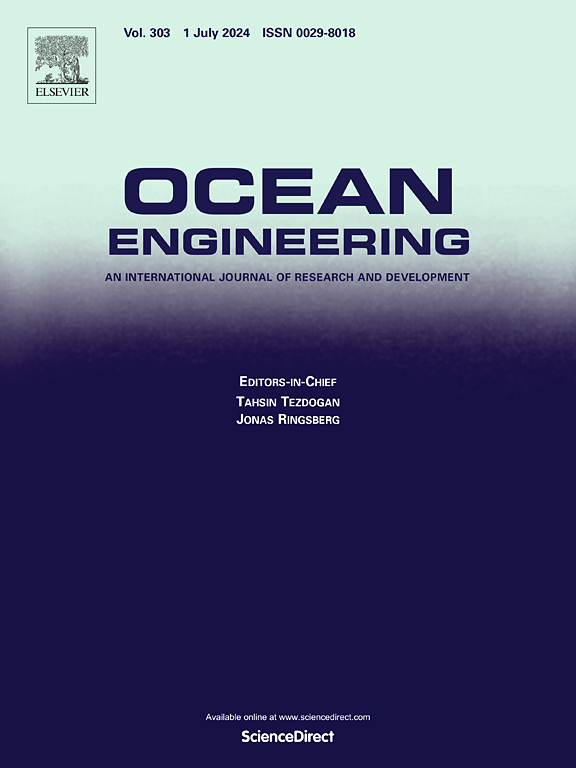Clustering observed nearshore wave groups in which rogue waves might arise
IF 4.6
2区 工程技术
Q1 ENGINEERING, CIVIL
引用次数: 0
Abstract
Given that pronounced waves or crests might occur within similar wave group patterns as rogue waves, and have similar formation mechanisms in similar wave environments, this study sought to identify typical wave group configurations prone to form rogue waves from a multitude of observed crest- or wave-height-marked wave groups. On the basis of nine specifically defined wave group characteristic parameters, the Self-Organizing Map technique was used to cluster the selected samples, following which four wave group types with notably higher possibility of producing large crest or wave heights were identified. It was found that large crest and wave heights can be related to wave groups with multiple contributive constituents and one principal component, respectively; the former frequently occur as solitary waves but the latter generally appear in a sequence of large waves. Furthermore, pronounced crests might be more closely related to second-order nonlinearities, while marked wave heights could be associated with both second- and third-order nonlinearities, as well as surface currents travelling in opposite direction to waves. Interestingly, wave groups supposed to have greater chance of producing prominent crests are also more predisposed to exhibit deep wave troughs with flatter crests.
求助全文
约1分钟内获得全文
求助全文
来源期刊

Ocean Engineering
工程技术-工程:大洋
CiteScore
7.30
自引率
34.00%
发文量
2379
审稿时长
8.1 months
期刊介绍:
Ocean Engineering provides a medium for the publication of original research and development work in the field of ocean engineering. Ocean Engineering seeks papers in the following topics.
 求助内容:
求助内容: 应助结果提醒方式:
应助结果提醒方式:


